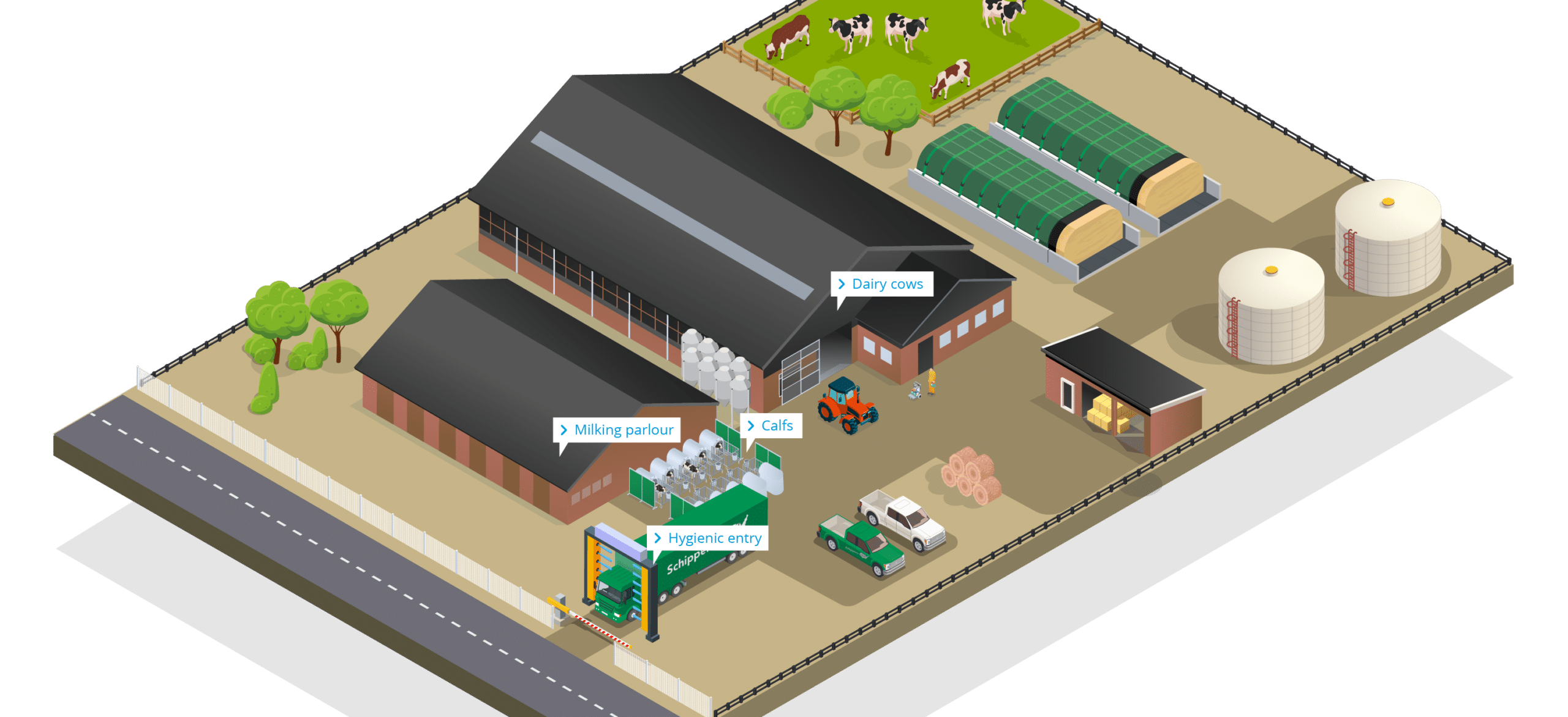
Dairy cows
These are the main shelters for dairy cows. Depending on the farm's setup, cows might be kept in freestall barns (individual stalls with bedding), tie-stall barns (cows are tied in individual stalls), or pasture-based systems. These barns provide protection from harsh weather conditions and also offer a controlled environment for managing the cows' health and comfort.
Milking parlour
This is where the milking of cows takes place. Milking parlour can vary in design, with options like herringbone, parallel, or rotary parlour. Modern milking parlour often use automated milking machines that milk multiple cows simultaneously, ensuring efficiency and reducing labour.
Calves
The calf rearing area. Young calves are typically kept separate from adult cows to ensure proper care and growth. Calf rearing facilities have individual pens or group housing systems and provide the necessary nutrition, warmth, and attention to help calves develop into healthy replacements for the milking herd.
Hygienic entry
Many farms that focus on biosecurity include a hygienic farm entry area, usually a disinfection gate or manual cleaning and disinfection area for trucks, goods or persons that enter the farm.
Biosecurity programsfor dairy farms
Dairy cow barns
What’s important to create a biosecure dairy barn?
Healthy cows are more productive, live longer and need no treatment. The HyCare biosecurity program is aimed at implementing preventive measures to control pathogens and boost the cows’ health and immune systems.
Common challenges
- Lameness: Caused by poor hoof health, inadequate flooring, and improper nutrition. Impacts milk production, reproductive performance, and cow welfare.
- Mastitis: A dry living environment helps to prevent mastitis.
- Low quality drinking water: For every litre of milk produced, a cow needs to drink approximately 17 litres of water. The less they drink, the less milk is produced.
HyCare biosecurity programs for dairy cows

Optimal hoofcare
Healthy hooves are the foundation for proper water and feed intake in the dairy herd. Claw problems are a major negative influence on cow longevity. A lame cow often gets into a negative energy balance, which lowers her water and feed intake. This can also lead to fertility problems, which is another cause of premature dairy cow deaths.
The MS AutoHoofClean system is a fully automated system placed at the milking robot’s exit or in the return alley of a conventional barn.
Two types of packages:
- Robot package: 180 cm mattress, 10 MS HoofClean jugs (20 kg) and a pump unit.
- Conventional package: 300 cm mattress, MS HoofClean jugs (depending on the number of cows), and a pump unit.
The pump unit is fully programmed to know when to fill the mat with MS HoofClean or a disinfectant. The mattress has a hard top layer with small holes, so the chemical comes only out where the hoof will touch it.
MS AutoHoofClean is a preventive and curative system against heel warts (digital dermatitis).
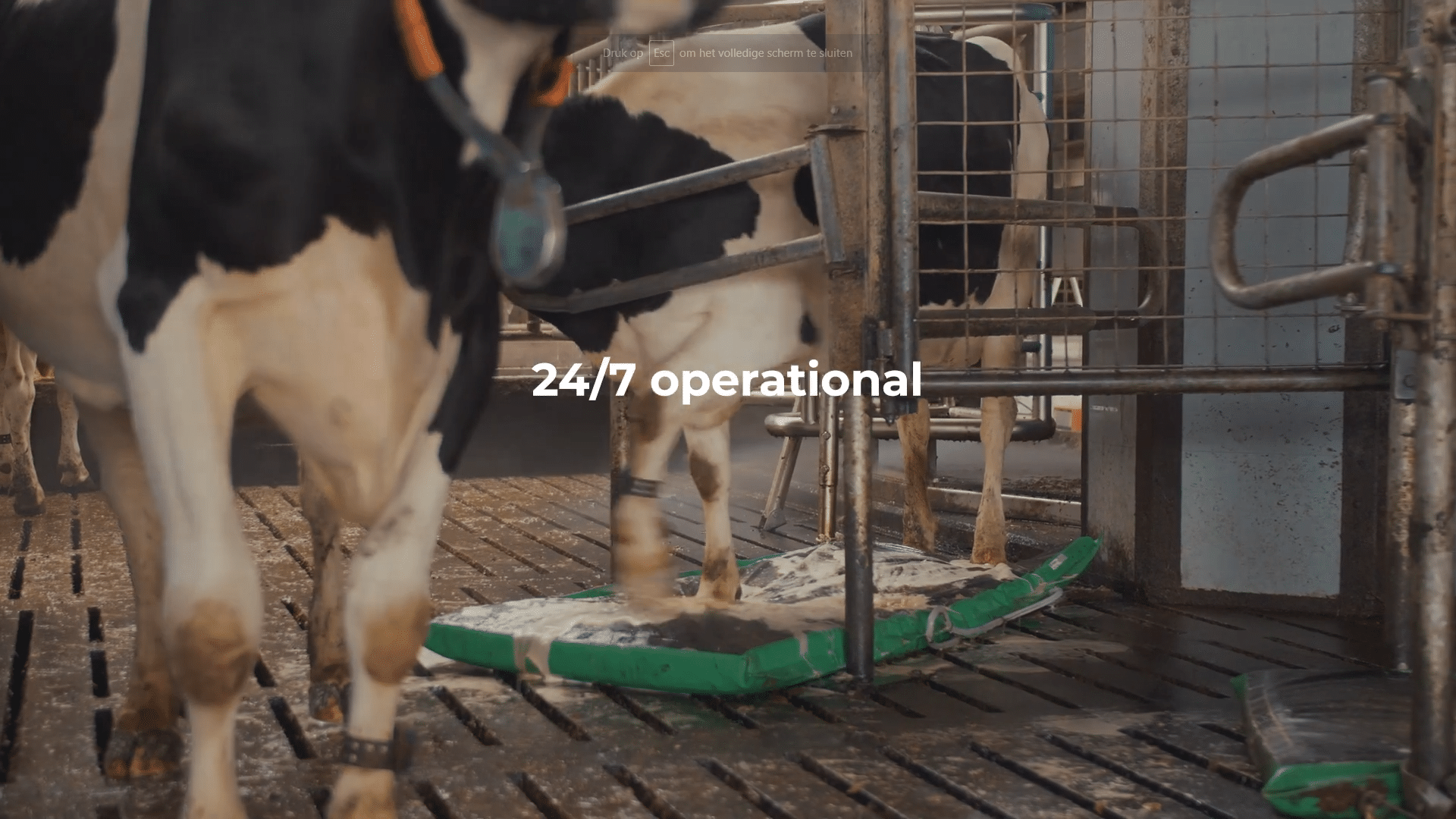
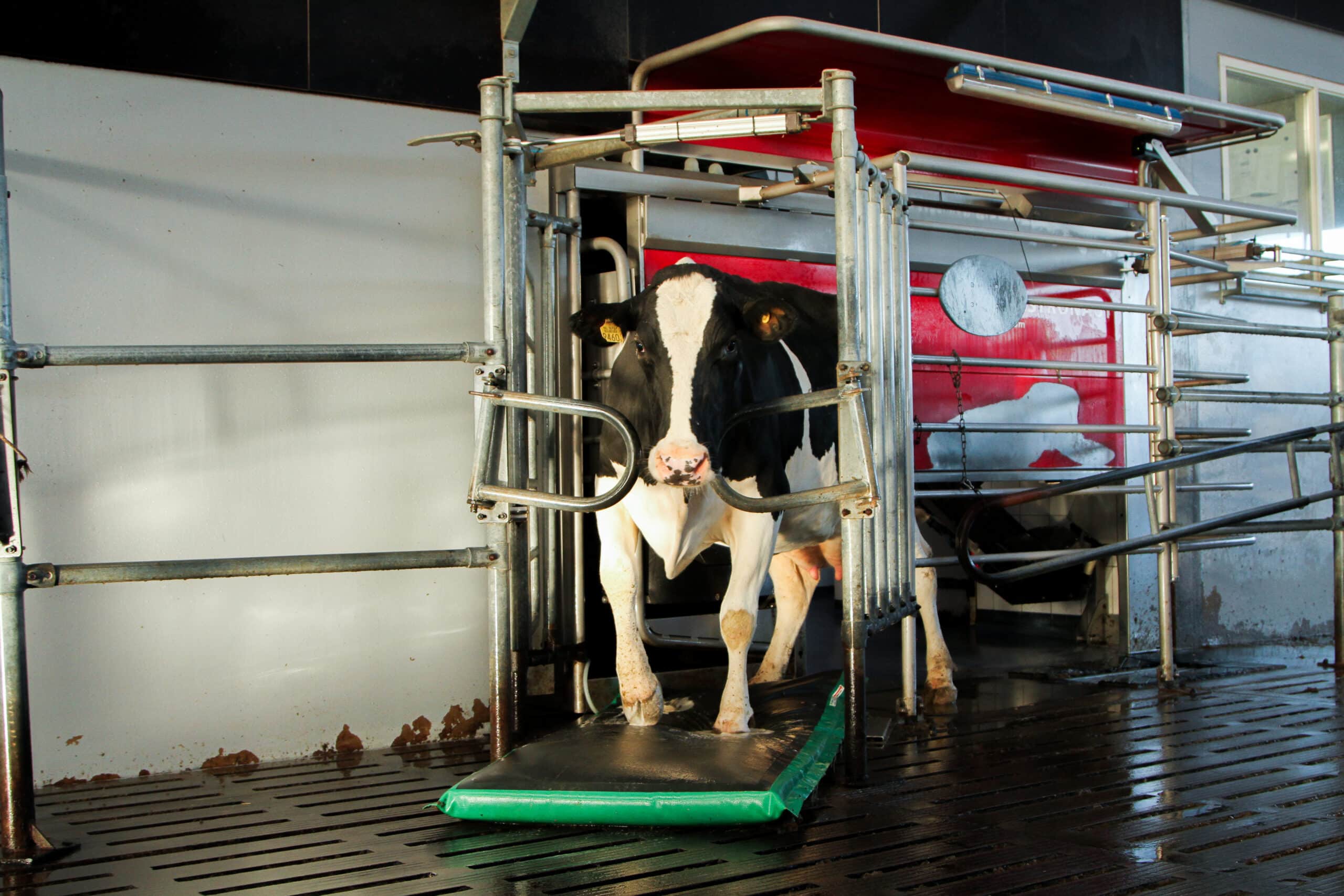
Dry living environment
The dry living environment program focuses mainly on maintaining clean and dry bedding for the cows to promote their comfort, health, and productivity while minimizing the risk of various health issues and promoting overall herd welfare.
- Reduced skin and udder issues: Wet bedding can lead to skin irritation and udder infections. Moist conditions can promote the growth of bacteria and pathogens, leading to mastitis, a common udder infection in dairy cows. Dry bedding helps minimize the risk of these infections.
- Prevention of lameness: Wet and soiled bedding can lead to hoof problems and lameness. Hooves constantly exposed to wet conditions are more susceptible to hoof rot and other infections. Dry bedding helps to prevent moisture-related hoof problems.
- Thermal comfort: Dry bedding helps insulate cows from cold and damp conditions, providing a more comfortable environment. Cows exposed to prolonged cold and wet conditions can experience stress, suppressed immune function, and reduced milk production.
- Hygiene and disease prevention: Properly maintained dry bedding reduces the risk of bacterial and fungal growth. It helps to prevent the spread of diseases among cows and provides a cleaner environment for them to live in.
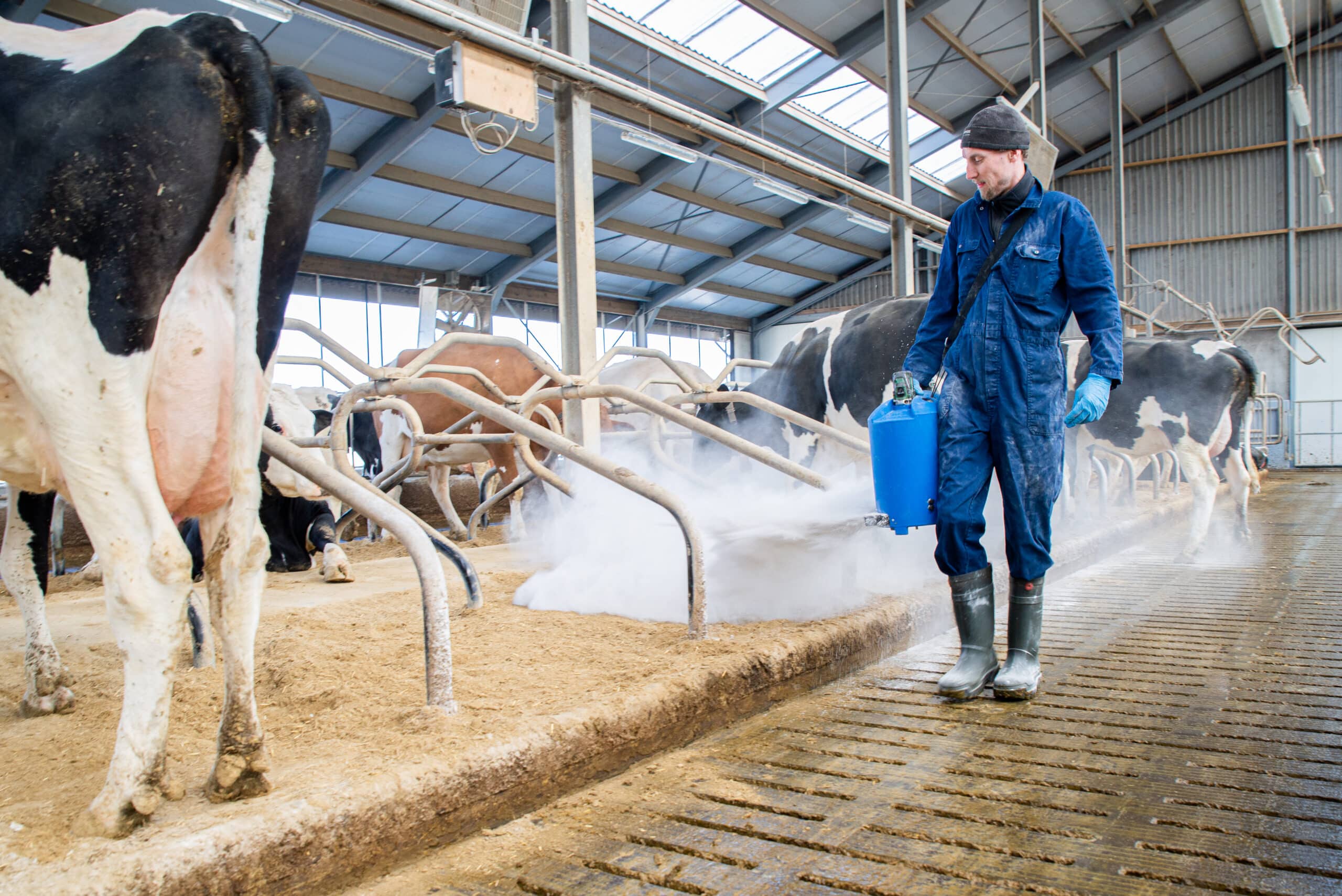
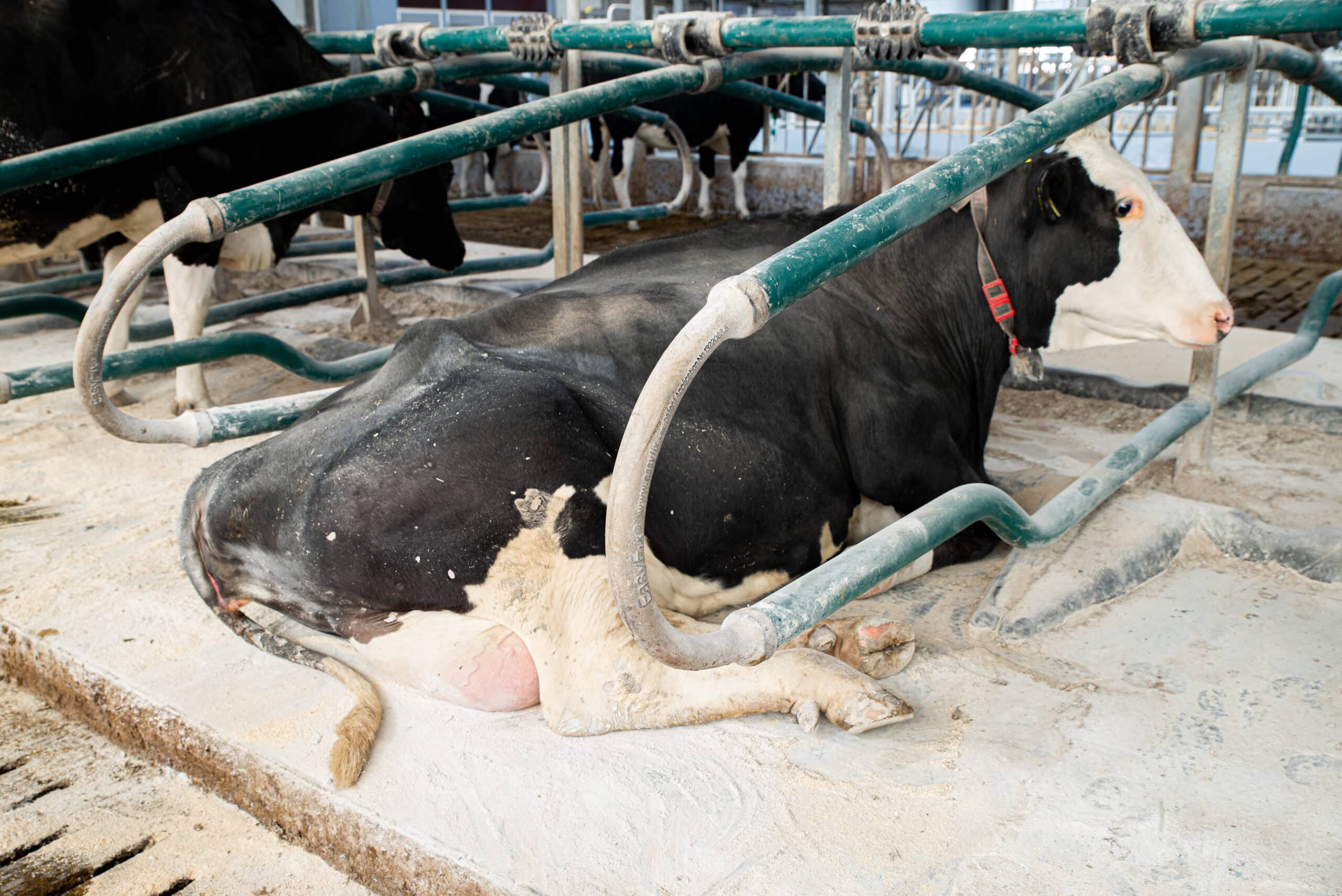
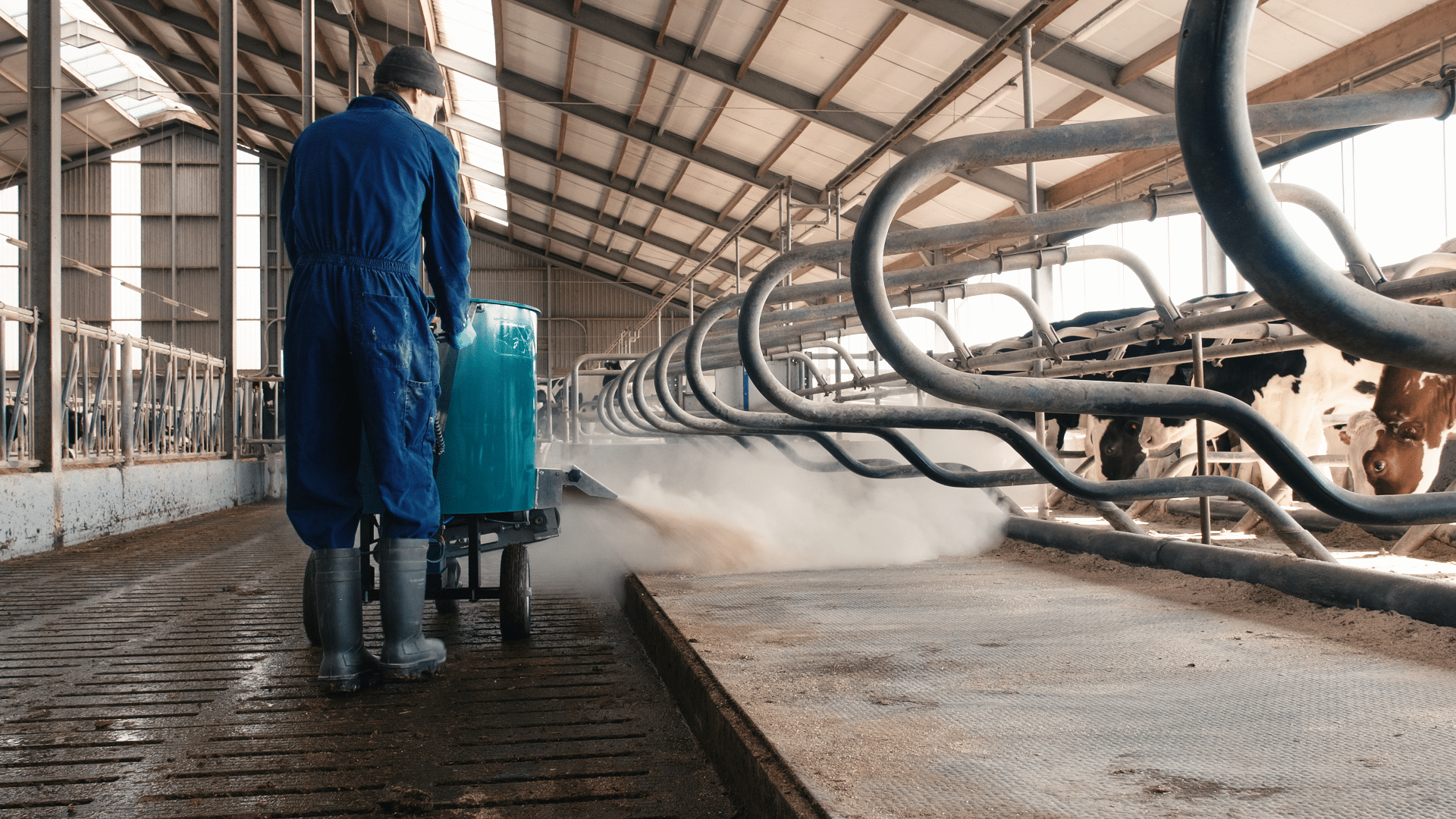
Clean drinking water
A cow needs to drink approximately 17 litres of water for each litre of milk produced.
Access to clean, healthy and tasty drinking water ensures optimal water intake. A well-hydrated cow is more likely to maintain optimal milk production levels. Inadequate water intake can lead to reduced milk yield and altered milk composition.
The HyCare clean drinking water program ensures the availability of healthy drinking water at all times.
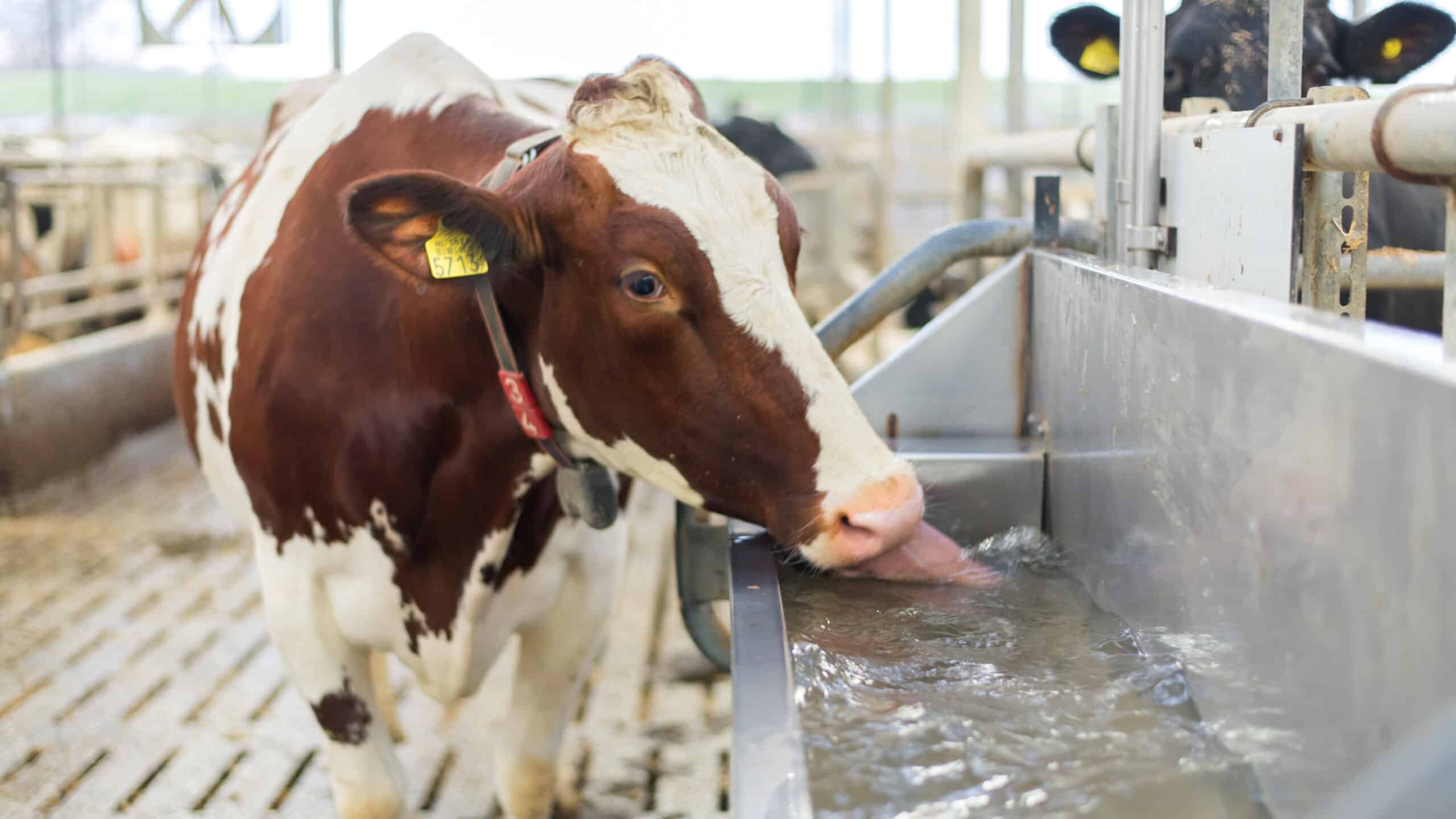
Healthy hooves are the foundation for proper water and feed intake in the dairy herd. Claw problems are a major negative influence on cow longevity. A lame cow often gets into a negative energy balance, which lowers her water and feed intake. This can also lead to fertility problems, which is another cause of premature dairy cow deaths.
The MS AutoHoofClean system is a fully automated system placed at the milking robot’s exit or in the return alley of a conventional barn.
Two types of packages:
- Robot package: 180 cm mattress, 10 MS HoofClean jugs (20 kg) and a pump unit.
- Conventional package: 300 cm mattress, MS HoofClean jugs (depending on the number of cows), and a pump unit.
The pump unit is fully programmed to know when to fill the mat with MS HoofClean or a disinfectant. The mattress has a hard top layer with small holes, so the chemical comes only out where the hoof will touch it.
MS AutoHoofClean is a preventive and curative system against heel warts (digital dermatitis).


The dry living environment program focuses mainly on maintaining clean and dry bedding for the cows to promote their comfort, health, and productivity while minimizing the risk of various health issues and promoting overall herd welfare.
- Reduced skin and udder issues: Wet bedding can lead to skin irritation and udder infections. Moist conditions can promote the growth of bacteria and pathogens, leading to mastitis, a common udder infection in dairy cows. Dry bedding helps minimize the risk of these infections.
- Prevention of lameness: Wet and soiled bedding can lead to hoof problems and lameness. Hooves constantly exposed to wet conditions are more susceptible to hoof rot and other infections. Dry bedding helps to prevent moisture-related hoof problems.
- Thermal comfort: Dry bedding helps insulate cows from cold and damp conditions, providing a more comfortable environment. Cows exposed to prolonged cold and wet conditions can experience stress, suppressed immune function, and reduced milk production.
- Hygiene and disease prevention: Properly maintained dry bedding reduces the risk of bacterial and fungal growth. It helps to prevent the spread of diseases among cows and provides a cleaner environment for them to live in.



A cow needs to drink approximately 17 litres of water for each litre of milk produced.
Access to clean, healthy and tasty drinking water ensures optimal water intake. A well-hydrated cow is more likely to maintain optimal milk production levels. Inadequate water intake can lead to reduced milk yield and altered milk composition.
The HyCare clean drinking water program ensures the availability of healthy drinking water at all times.


Contact us
Cuong Nguyen
Cuong Nguyen is our Technical Sales Manager and based in Ho Chi Minh City.
